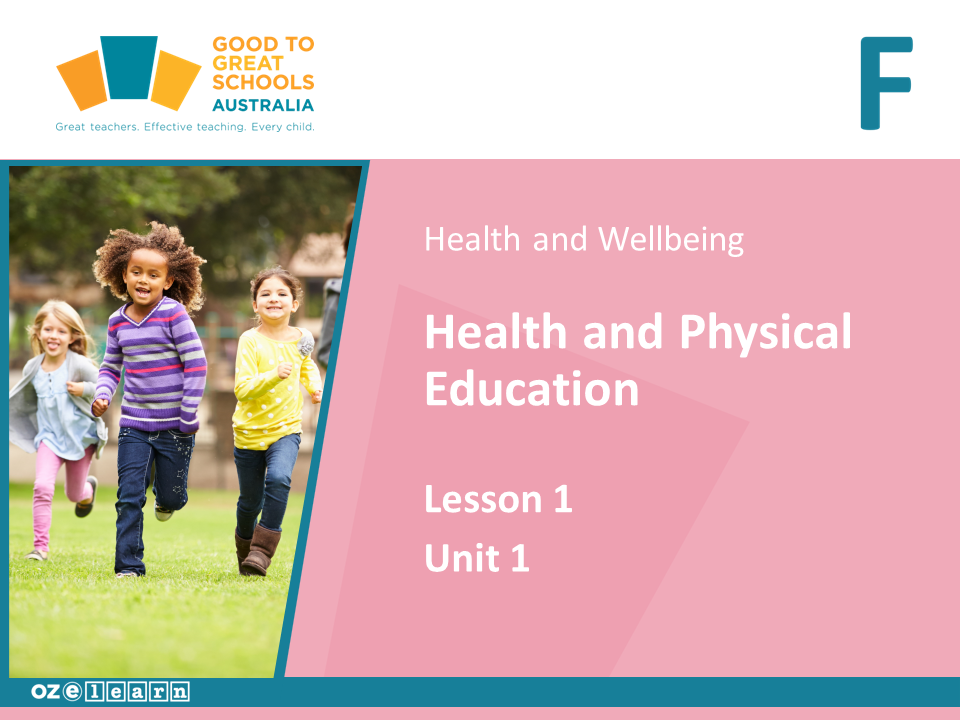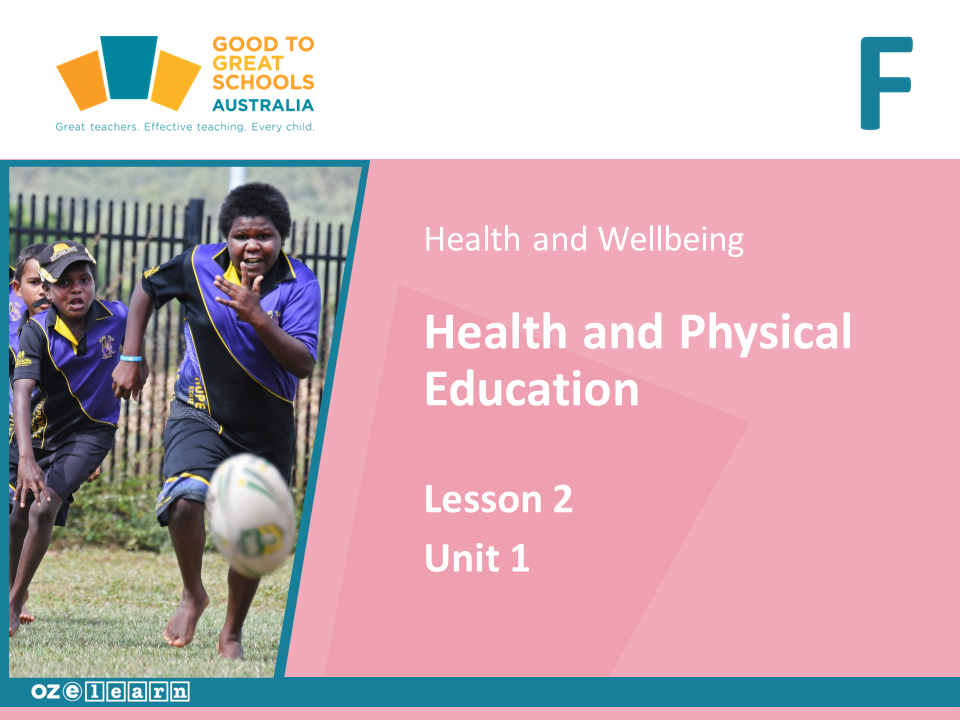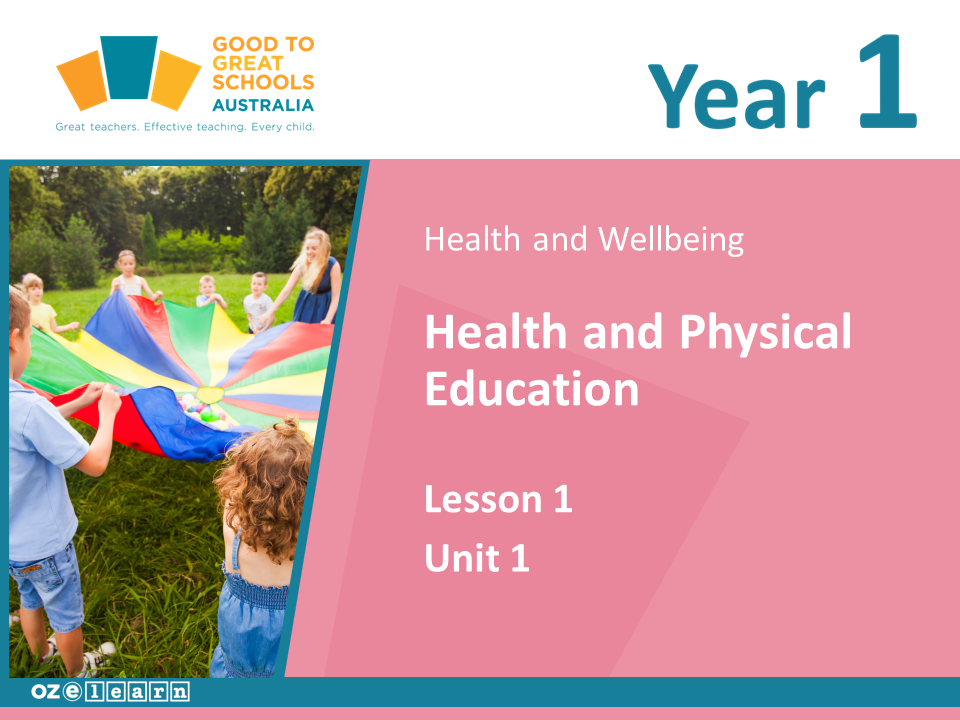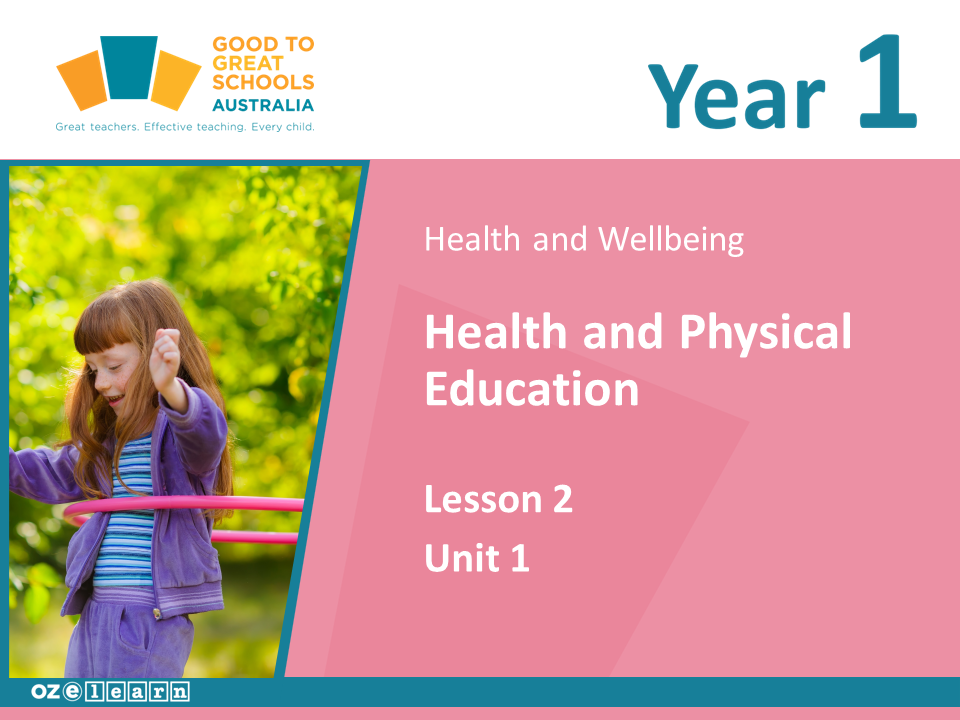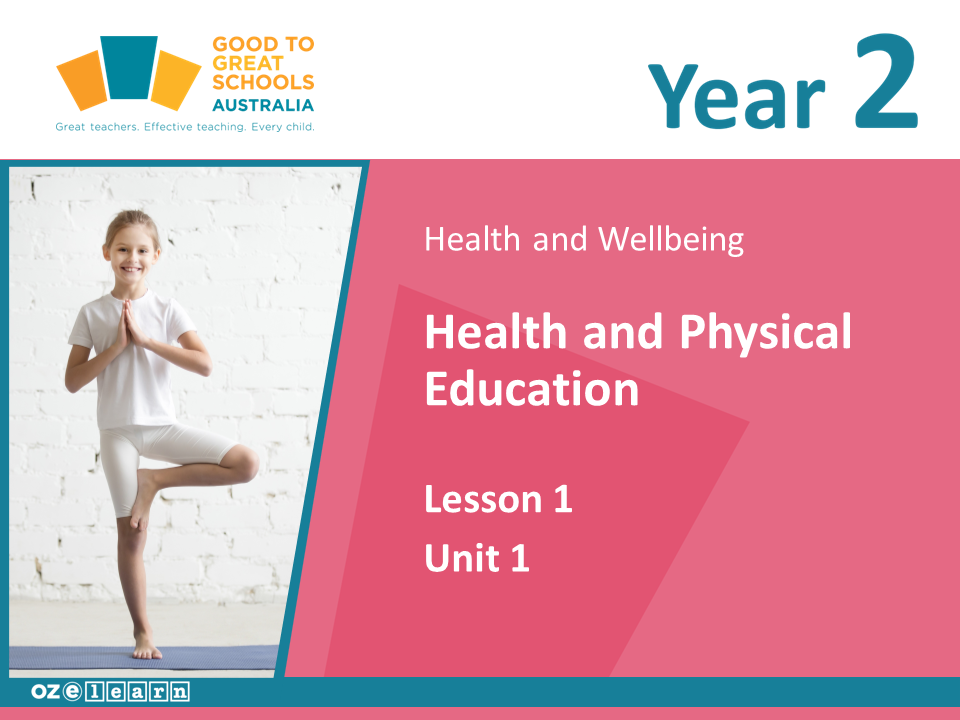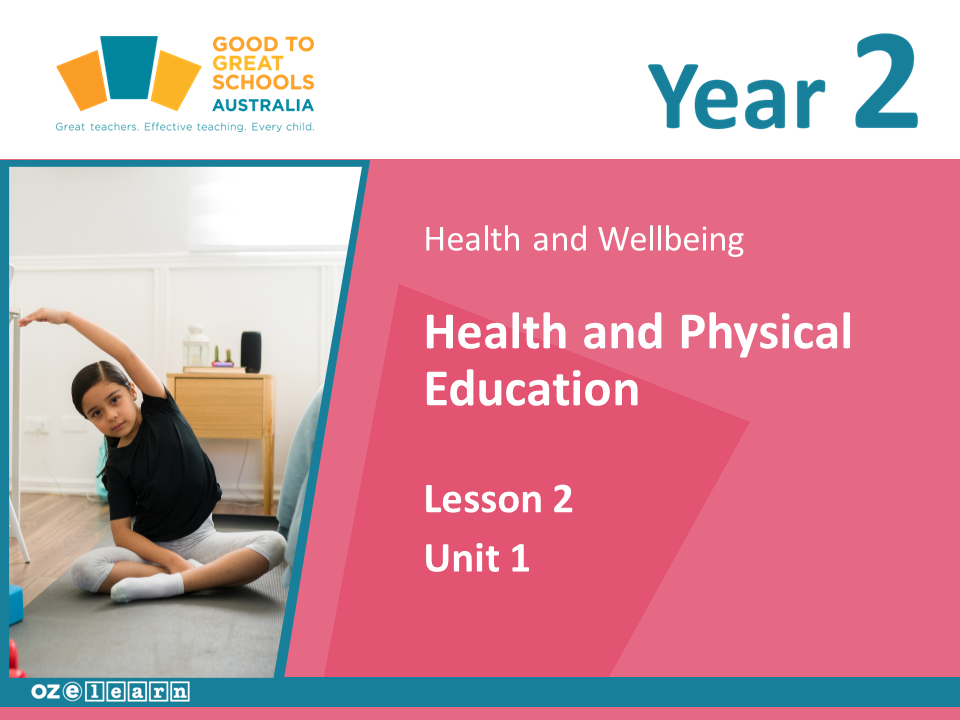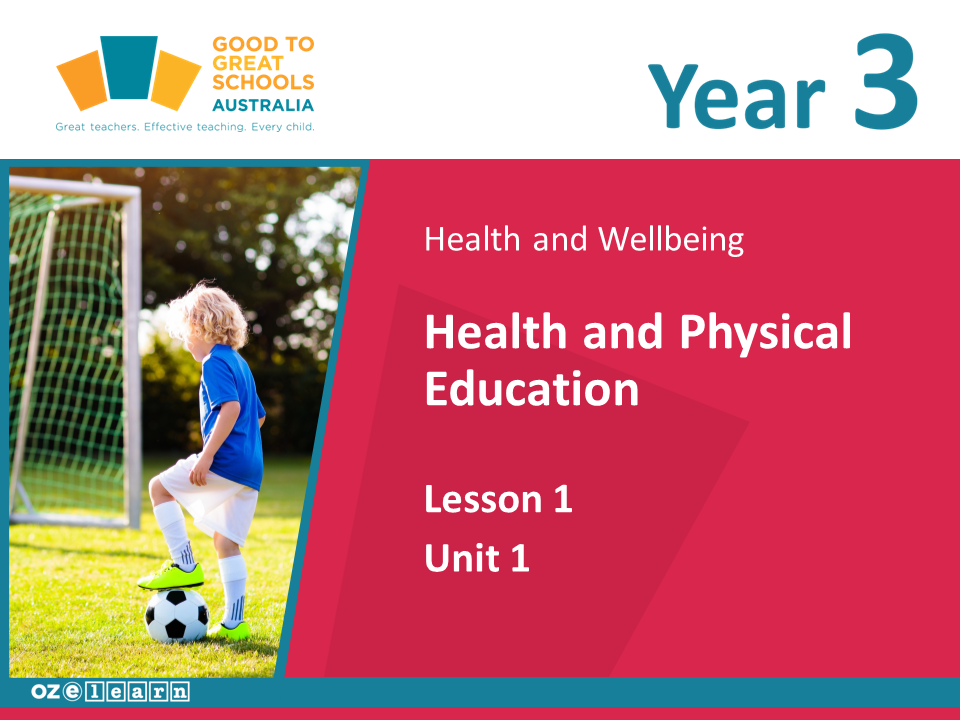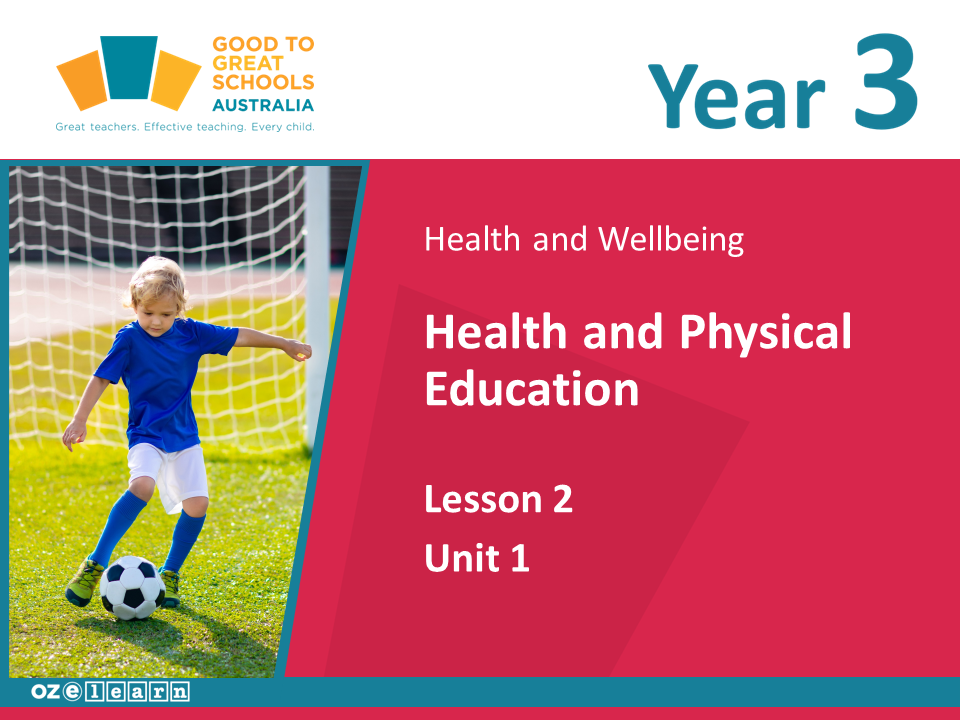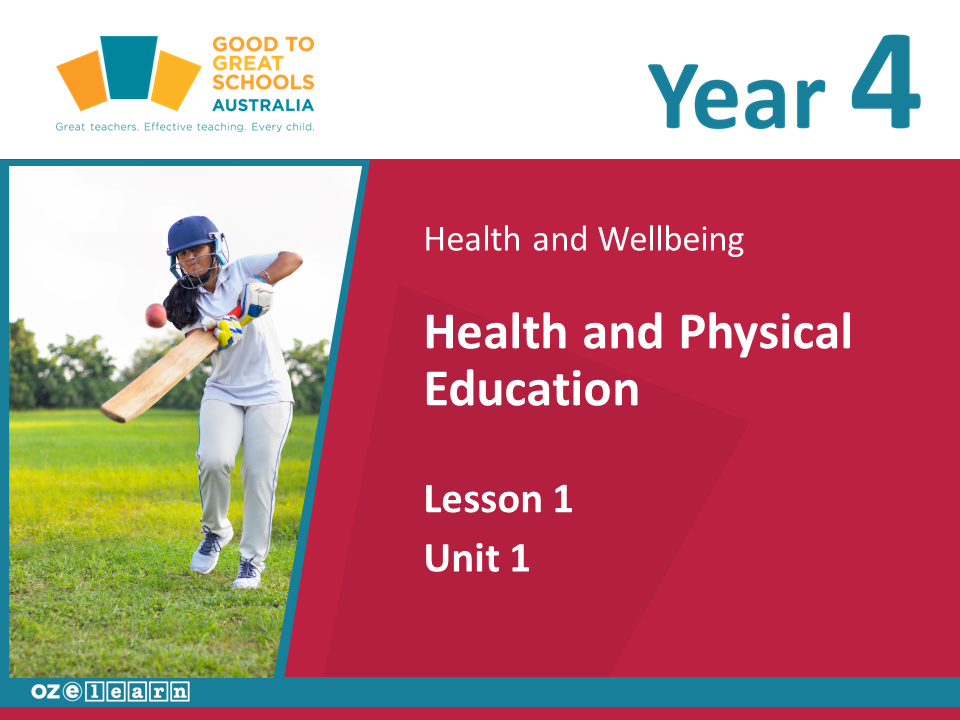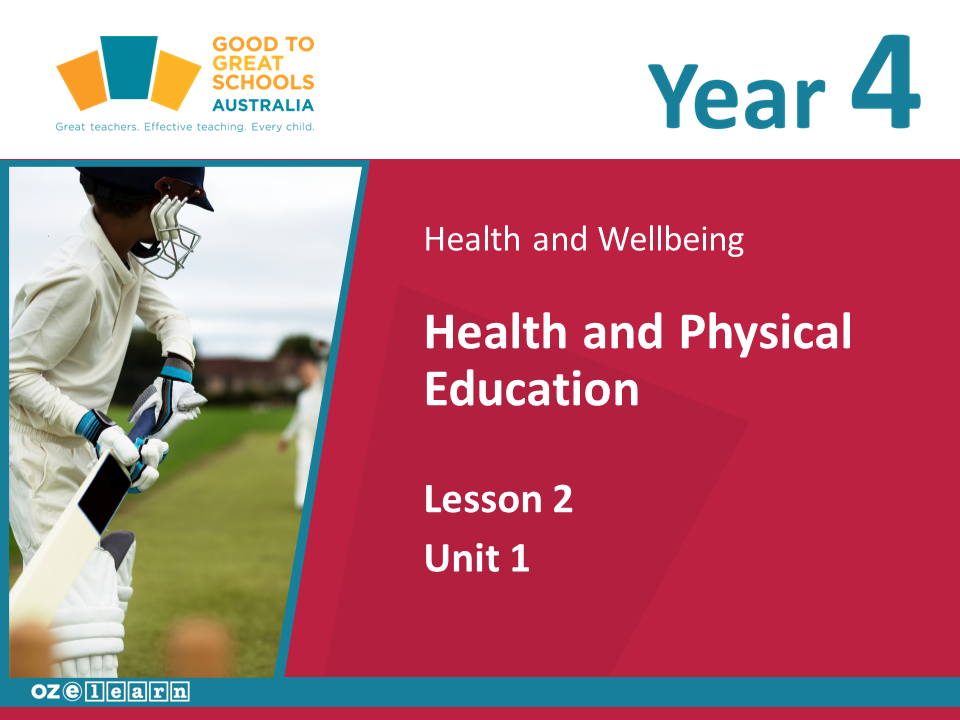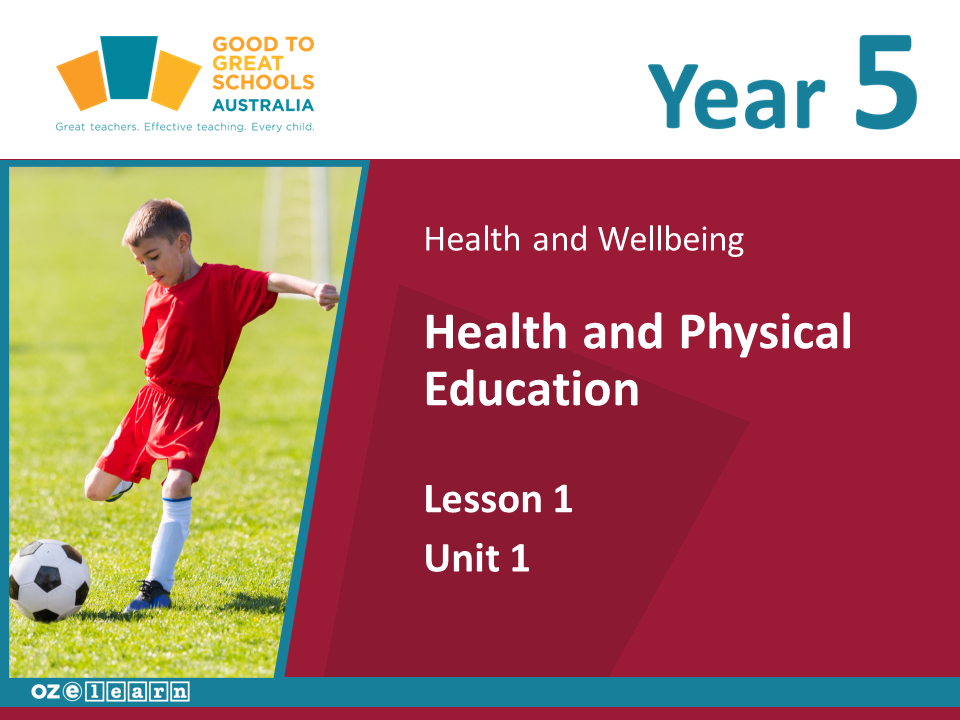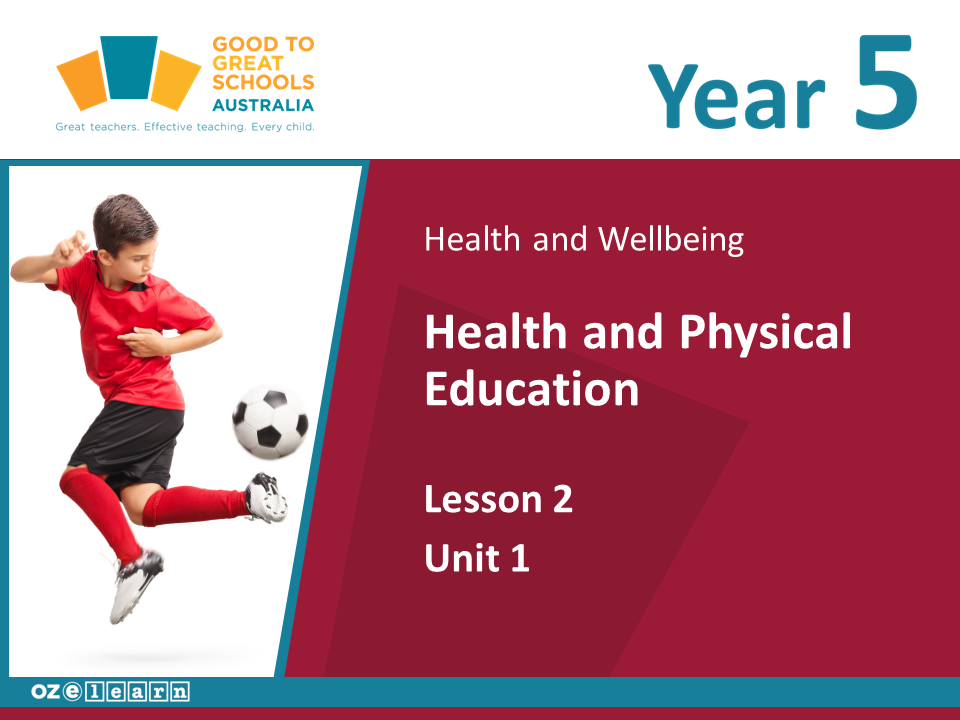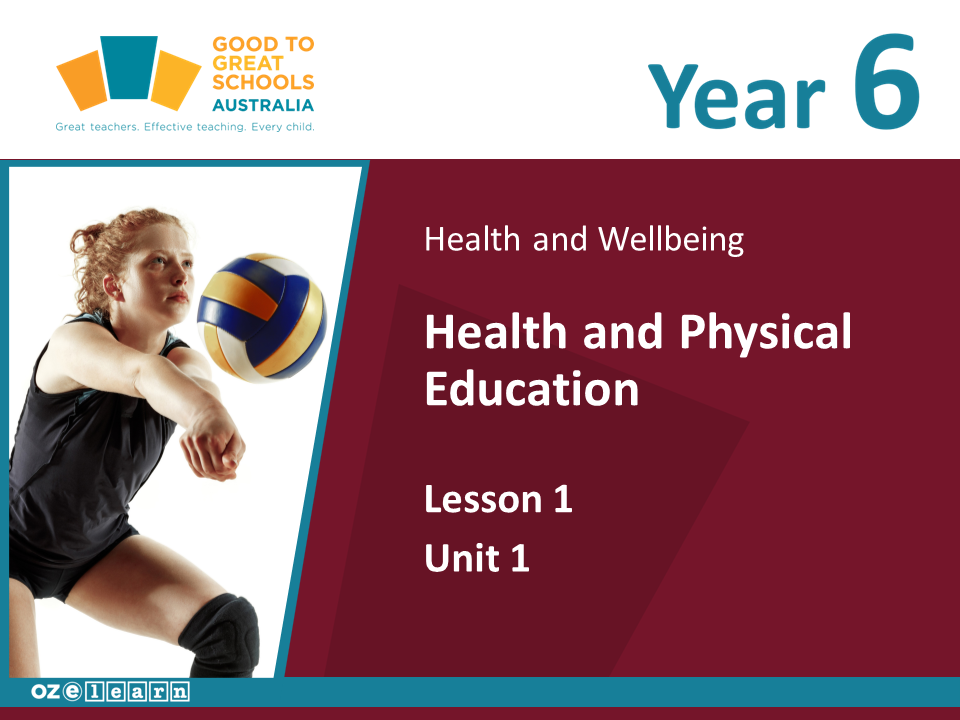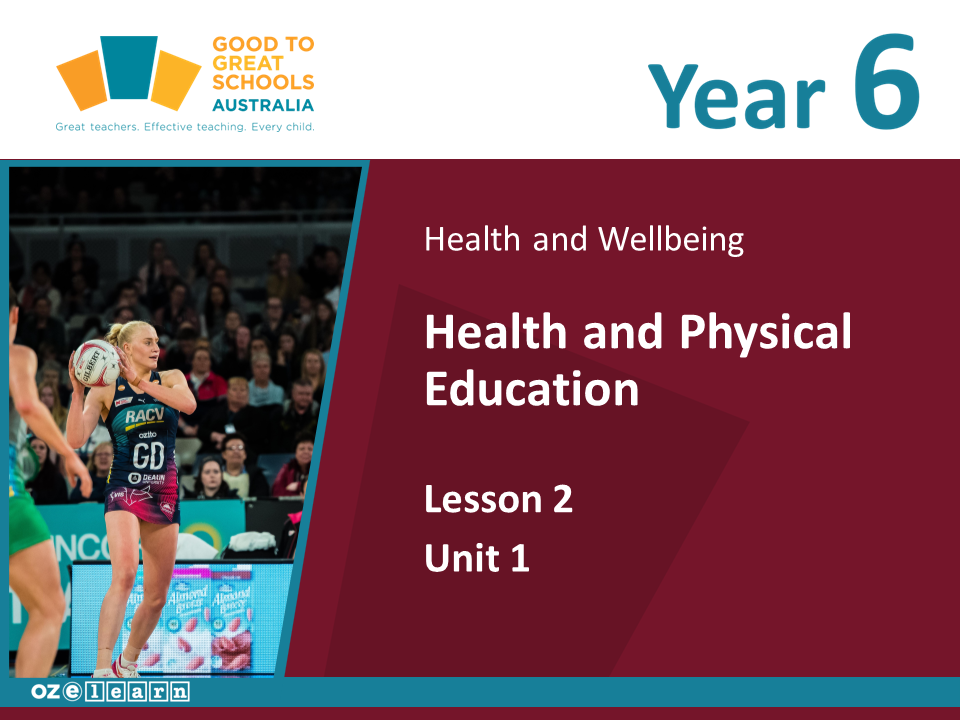Health and Physical Education F-6
Unit 1
Health and Physical Education F-6 is a Health and Physical Education program that has an explicit instruction pedagogy, focuses on Australian perspectives and covers the Australian Curriculum requirements.
Free Starter Lessons
Unit Overviews
Australian Curriculum Content Descriptions
In Learning in Motion, students will learn and practise fundamental movement skills using their bodies. They will explore and react to the challenges of structured Physical Education activities.
Learning Objectives
In Lessons 1 to 7, students learn to:
- move their bodies and run fast
- change direction when running
- complete an underarm and an overarm throw
- move their bodies when they catch something
- move when throwing and catching
- move when kicking a ball
- move when jumping.
Assessment
Observations of individual skill components during each lesson and formal assessment in Lesson 9. Students to be assessed on performance of skill and active involvement in class activities.
Australian Curriculum Content Descriptions
In Movement and Play, students will continue to discover locomotor skills, body management skills and object control skills in response to stimuli.
Learning Objectives
In Lessons 1 to 8, students learn to:
- control the parachute and demonstrate how individual movements contribute to the team’s movement
- control a hula hoop
- run and dodge
- dribble, bounce and pass a ball
- complete a one-hand strike with and without equipment
- roll, throw and catch a ball
- kick a ball
- maintain balance
- skip, gallop and jump.
Assessment
Observations of individual skill components during each lesson and formal assessment in Lesson 9. Students to be assessed on performance of skill and active involvement in class activities.
Australian Curriculum Content Descriptions
In Jump Like a Kangaroo, Run Like an Emu, students will develop stability skills to control balance, locomotion skills, object manipulation, springs and landings through active play- based games.
Learning Objectives
In Lessons 1 to 7, students learn to:
- maintain balance
- maintain balance while running
- spin a hula hoop
- jump and land
- jump a long skipping rope
- skip forwards and backwards using a short skipping rope.
Assessment
Observations of individual skill components during each lesson and formal assessment in Lessons 8 and 9. Students to be assessed on performance of skill and active involvement in class activities.
Australian Curriculum Content Descriptions
In Movement and Play II, students will challenge their existing fundamental movement skills including dribbling (foot/hand), kicking, throwing (while moving) and catching (while moving).
Learning Objectives
In Lessons 1 to 7, students learn to:
- kick and dribble a ball
- kick and dribble a moving ball
- kick a moving ball
- punt and catch a high ball
- punt and catch a ball
- chest pass, catch and dribble a ball
- throw at a moving target.
Assessment
Observations of individual skill components during each lesson and formal assessment in Lessons 8 and 9. Students to be assessed on performance of skill and active involvement in class activities.
Australian Curriculum Content Descriptions
In Catch Me if You Can, students will practise and refine fundamental movement skills in different situations. This unit will link the fundamental movement skills to the movement sequences required for key striking games including cricket and tee-ball.
Learning Objectives
In Lessons 1 to 7, students learn:
- a two-handed strike using a cricket bat
- an underarm roll and catch and how to use these skills in modified cricket games
- an overarm throw controlling power and direction of the ball
- a two-handed strike using a tee-ball bat
- a two-handed directional strike using a tee-ball bat
- an underarm throw when fielding in tee-ball.
Assessment
Observations of individual skill components during each lesson and formal assessment in Lessons 8 and 9. Students to be assessed on performance of skill and active involvement in class activities.
Australian Curriculum Content Descriptions
In Soccer, students will perform and combine specialised movement skills and strategies to discover the biggest game in the world – the game of soccer.
Learning Objectives
In Lessons 1 to 7, students learn to:
- kick and dribble a soccer ball
- kick, dribble and pass a soccer ball
- throw and trap a soccer ball
- kick a soccer ball at a stationary and moving target
- tackle to gain possession of a ball
- use hands and body to stop a moving ball in the game of soccer
- strike when shooting for a goal.
Assessment
Observations of individual skill components during each lesson and formal assessment in Lessons 8 and 9. Students to be assessed on performance of skill and active involvement in class activities.
Australian Curriculum Content Descriptions
In Netball and Fitness Fun, students will explore the components of fitness and participate in focused activities designed to enhance their performance in the game of netball.
Learning Objectives
In Lessons 1 to 7, students learn to:
- chest pass and lob pass in a modified game of netball
- shoulder pass and bounce pass in a modified game of netball
- control the direction of a netball when shooting for a hoop
- create open spaces and move into position when shooting for a hoop
- identify and describe the health-related components of fitness
- jump and gain possession of the ball and pivot to pass the ball
- defend an attacking player.
Assessment
Observations of individual skill components during each lesson and formal assessment in Lessons 8 and 9. Students to be assessed on performance of skill and active involvement in class activities.


